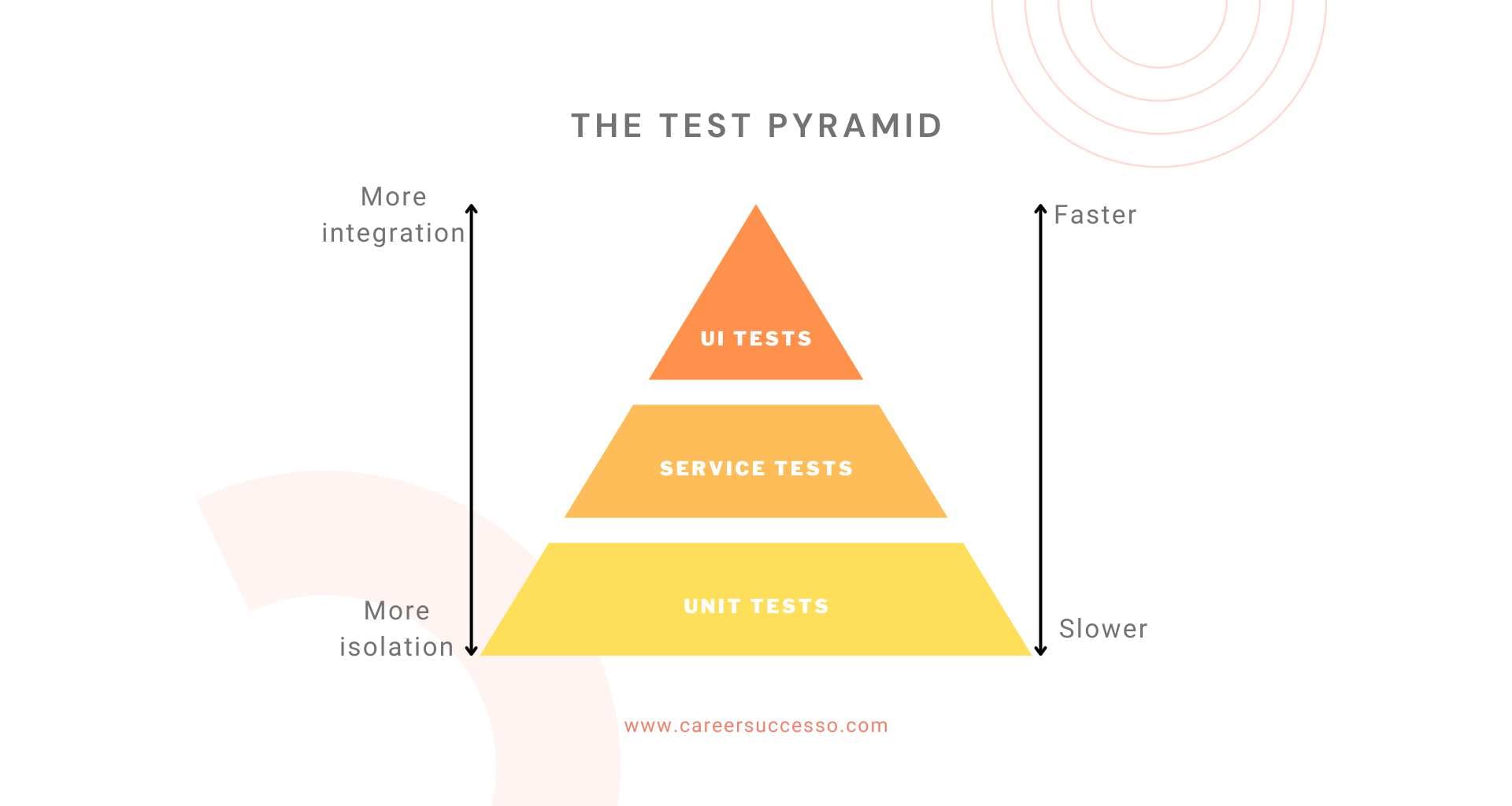The Test Pyramid

The Test Pyramid is a powerful concept in software development that helps teams allocate their testing efforts efficiently. It emphasizes the importance of a strong foundation of unit tests, complemented by a smaller number of more complex tests at higher levels
Unit and integration level tests
- API-based tools.
System and acceptance levels
- GUI-based tools

Understanding the Layers:
The pyramid consists of three distinct layers:
- Unit Tests (Base): These isolate and test individual units of code (functions, classes) for correctness. They are fast, numerous, and provide rapid feedback on code changes.
- Integration Tests (Middle): They focus on interactions between components or services, verifying that they work together seamlessly. While more complex than unit tests, they're still relatively fast to execute.
- UI Tests (Top): These simulate user interactions with the application's interface, ensuring a smooth and reliable user experience. They are slower to execute and require more maintenance.
Key Characteristics:
- Granularity: Tests become broader, covering larger portions of the system as you move up the pyramid.
- Isolation: Lower levels have higher isolation, focusing on individual components. Higher levels involve interactions and multiple components.
- Execution Time: Unit tests are the fastest, with execution time increasing as you move towards UI tests.
Benefits of the Test Pyramid:
- Faster Feedback: A strong foundation of unit tests allows for quick detection of code changes that break functionality.
- Improved Code Quality: Writing unit tests often leads to better-designed, more modular code.
- Increased Test Reliability: Lower-level tests are generally more stable and easier to maintain than UI tests.
- Efficient Test Automation: By prioritizing unit and service tests, automation efforts are focused on tests with higher value.
- Better Test Coverage: A balanced approach ensures comprehensive testing across different levels.
Beyond the Pyramid:
The Test Cup model acknowledges the importance of exploratory testing and other non-automated techniques alongside automation. Human insight and creativity remain essential for effective testing.
Building a Real-World Example: E-commerce Website
Let's see how the Test Pyramid translates into action for building an e-commerce website:
- Unit Tests (Base):
- Focus: Individual components like calculating product pricing with taxes and discounts.
- Example: A unit test verifies this function for various input values, ensuring accuracy in isolation.
- Benefits: Fast, easy to write and maintain, providing rapid feedback on code changes.
- Integration Tests (Middle):
- Focus: Interactions between different components, like the product catalog and shopping cart services.
- Example: A test verifies that adding products to the cart functions correctly, updates quantities, and calculates the total price accurately.
- Benefits: Cover more complex scenarios than unit tests, but still relatively fast to execute.
- UI Tests (Top):
- Focus: Simulating user interactions with the application, like the entire checkout process.
- Example: A test verifies adding products, entering shipping information, selecting payment methods, and completing the order.
- Benefits: Validate the end-to-end user experience, but slower to execute and more prone to failures due to UI changes.
- Faster Development: Identify and fix issues quickly at the unit level, leading to faster development cycles.
- Improved Code Quality: Writing unit tests encourages better code design and modularity.
- Increased Confidence: A strong test suite provides confidence in code changes and reduces the risk of defects.
- Better User Experience: UI tests help ensure a smooth and reliable user experience.
Challenges and Considerations:
Test maintenance, false positives in UI tests, and balancing the number of tests at each level require careful planning based on project needs.
By following the Test Pyramid principles and tailoring them to specific projects, development teams can achieve high software quality and satisfied customers.





